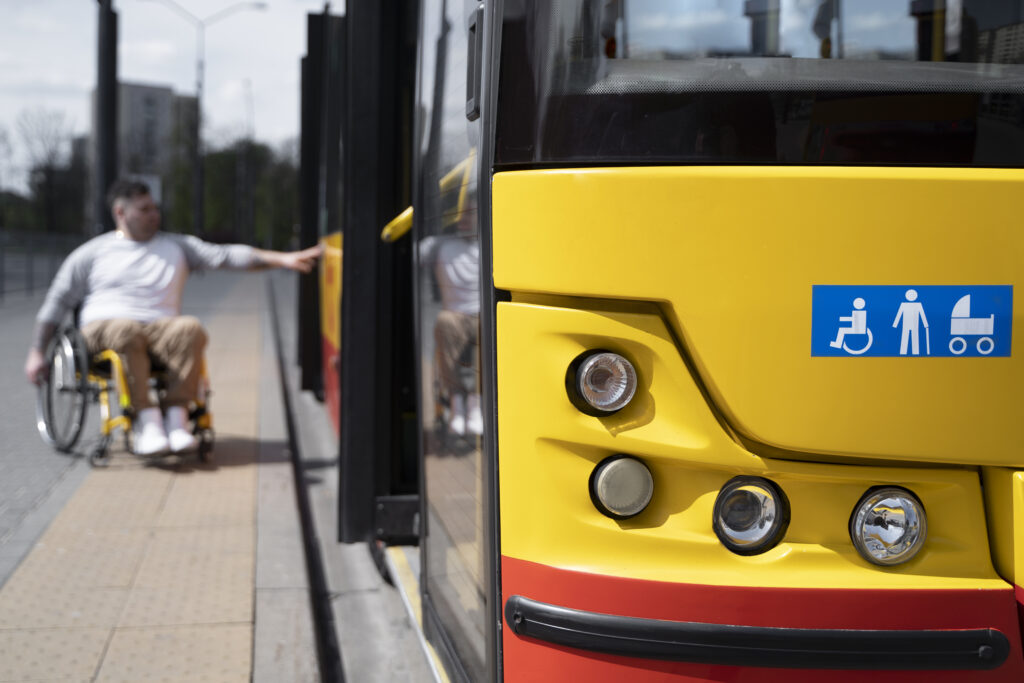Evaluating Accessibility and Commute
Drop a Line if you have a Question!
Commute More Efficient and Accessible
Are you tired of spending hours stuck in traffic every day? Do you wish there was a better way to make your commute more efficient and accessible?
In this article, we will explore the importance of evaluating accessibility and commute options. We will discuss the factors that affect accessibility, assess transportation options, and provide strategies for improving your commute experience.
So, if you’re ready to take control of your daily travel, keep reading to discover how you can make your commute more convenient and enjoyable.

The Importance of Accessibility in Commuting
You need to understand the importance of accessibility in your daily commute.
Accessibility plays a crucial role in ensuring a smooth and efficient journey from one place to another. When transportation options are easily accessible, you can save time, reduce stress, and increase productivity.
Imagine having a well-connected public transportation system with conveniently located bus stops or train stations near your home or workplace. This would eliminate the need for long walks or expensive cab rides.
Additionally, accessible commute options promote inclusivity by providing equal opportunities for everyone, regardless of their physical abilities.
By prioritizing accessibility, you not only make your own commute easier but also contribute to creating a more inclusive and sustainable transportation system for all.
Factors Affecting Accessibility and Commute
Factors such as distance, traffic, and public transportation options can greatly impact the ease of getting to and from a location. When evaluating the accessibility and commute of a place, it is important to consider these factors.
The distance between your starting point and destination plays a crucial role in determining how long it will take you to reach your desired location. Heavy traffic can significantly increase your travel time, making your journey more challenging and time-consuming.
On the other hand, having reliable and efficient public transportation options can make your commute much easier and convenient. Access to buses, trains, or subways can save you from the hassle of driving through congested roads.
Considering these factors can help you make informed decisions about the accessibility and commute of a particular location.
Evaluating Transportation Options for Accessibility
When considering transportation options, it’s important to take into account the convenience and reliability of different modes of travel.
As an individual looking for accessible transportation, you need to evaluate various factors to ensure a smooth and hassle-free commute.
Firstly, consider the convenience of the mode of travel. Is it easily accessible from your location? Are there multiple routes or options available to reach your destination?
Secondly, reliability plays a crucial role. How often does the transportation mode operate? Are there frequent delays or cancellations?
Lastly, assess the overall efficiency of the mode of travel. Does it provide a comfortable and safe journey? Is it cost-effective?
Assessing the Impact of Commute on Accessibility
Assessing how your daily commute impacts your ability to access essential services and resources is crucial. Your commute plays a significant role in determining how easily you can access the services and resources you need on a daily basis.
The time it takes you to travel to work or run errands can greatly affect your productivity and overall quality of life. If your commute is long and time-consuming, it can limit the amount of time you have available to access essential services such as healthcare, education, and grocery stores.
Moreover, a lengthy commute can also increase your stress levels and negatively impact your physical and mental well-being. The constant traffic and long hours spent commuting can take a toll on your health and make it harder to prioritize self-care.
On the other hand, a shorter and more efficient commute can enhance your access to essential services and resources. It allows you to have more time and energy to focus on other aspects of your life. With a shorter commute, you can have more time to spend with your family, pursue hobbies, or engage in activities that contribute to your personal growth.
Strategies for Improving Accessibility in Commute
To enhance your daily commute and improve accessibility, consider implementing strategies that can save you time and make your travel experience more efficient.
Start by organizing your schedule and planning your route in advance. This allows you to avoid congested areas and choose the fastest and most convenient path.
Utilize technology, such as GPS navigation systems or transportation apps, to get real-time updates on traffic conditions and alternative routes.
Carpooling or using rideshare services can also be a great option, reducing both traffic congestion and your travel expenses.
If possible, consider flexible work hours to avoid peak travel times.
Additionally, exploring alternative modes of transportation like biking or walking can be beneficial for short distances.
Conclusion
In conclusion, evaluating accessibility and commute is crucial for ensuring efficient and convenient transportation options. By considering factors such as distance, transportation modes, and infrastructure, individuals can make informed decisions that improve accessibility.
It is important to assess the impact of commute on accessibility to identify areas for improvement and implement strategies accordingly. By continuously working towards enhancing accessibility in commute, we can create an inclusive and accessible transportation system that benefits everyone.

Have a question?
Become a
























